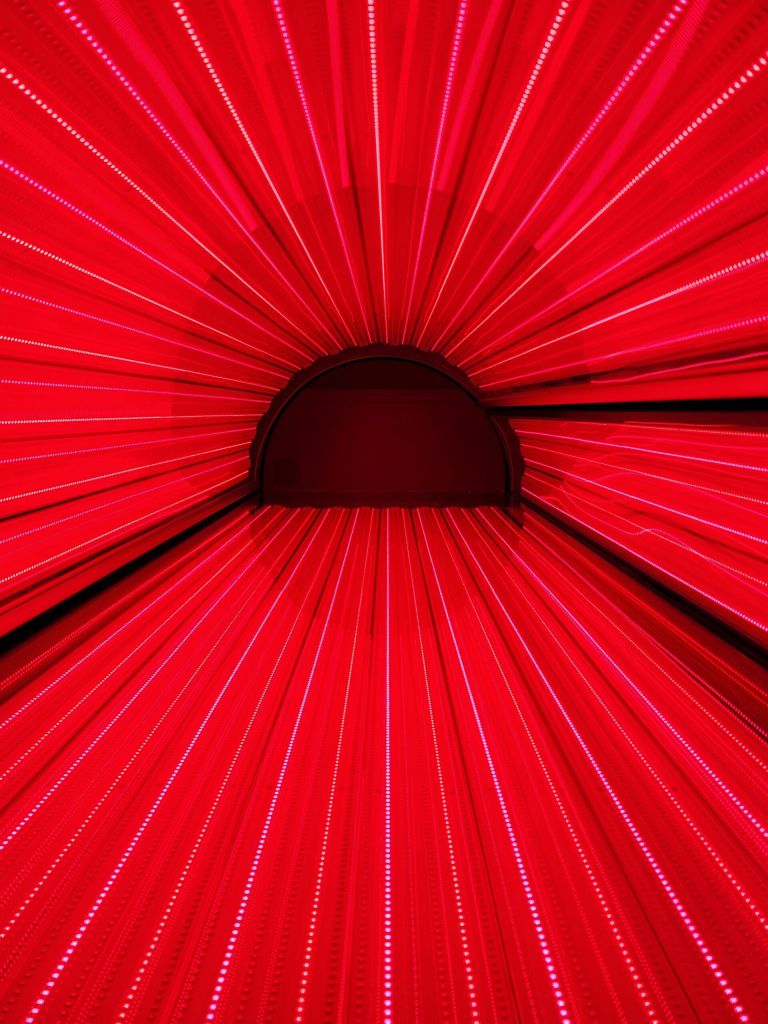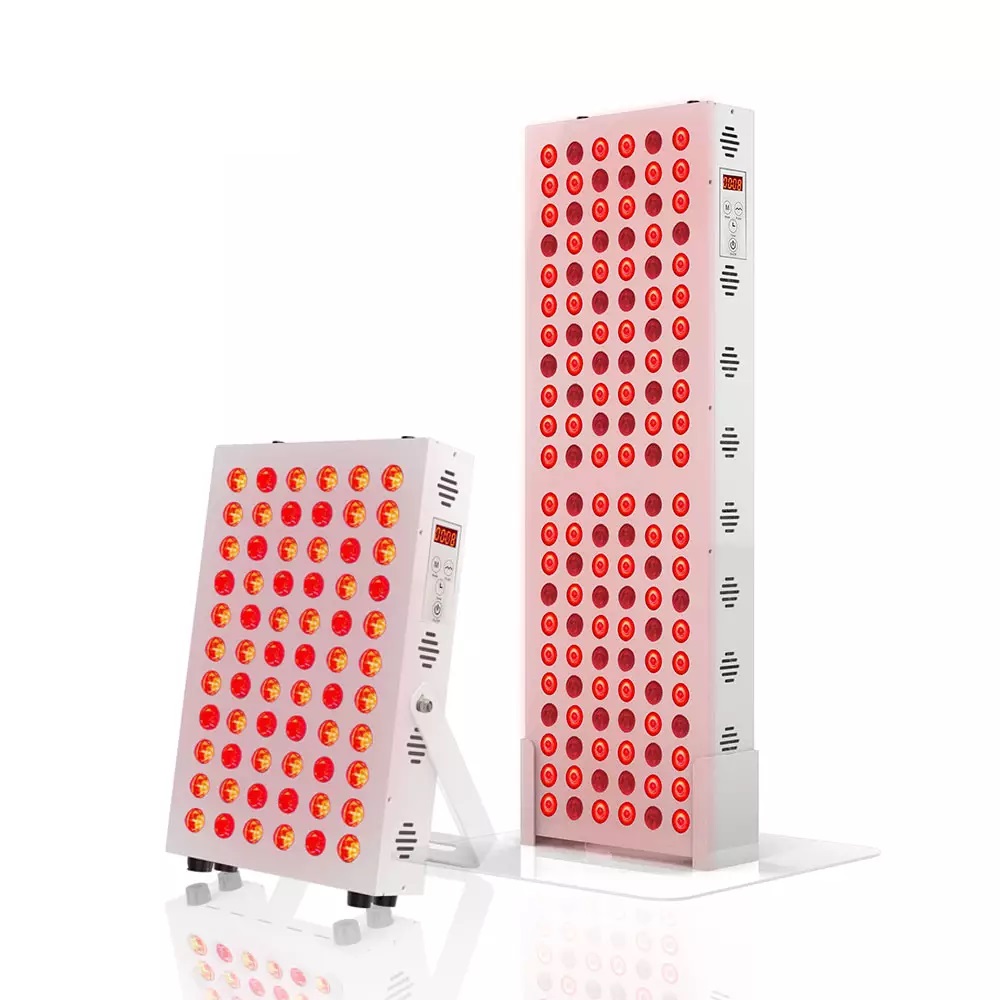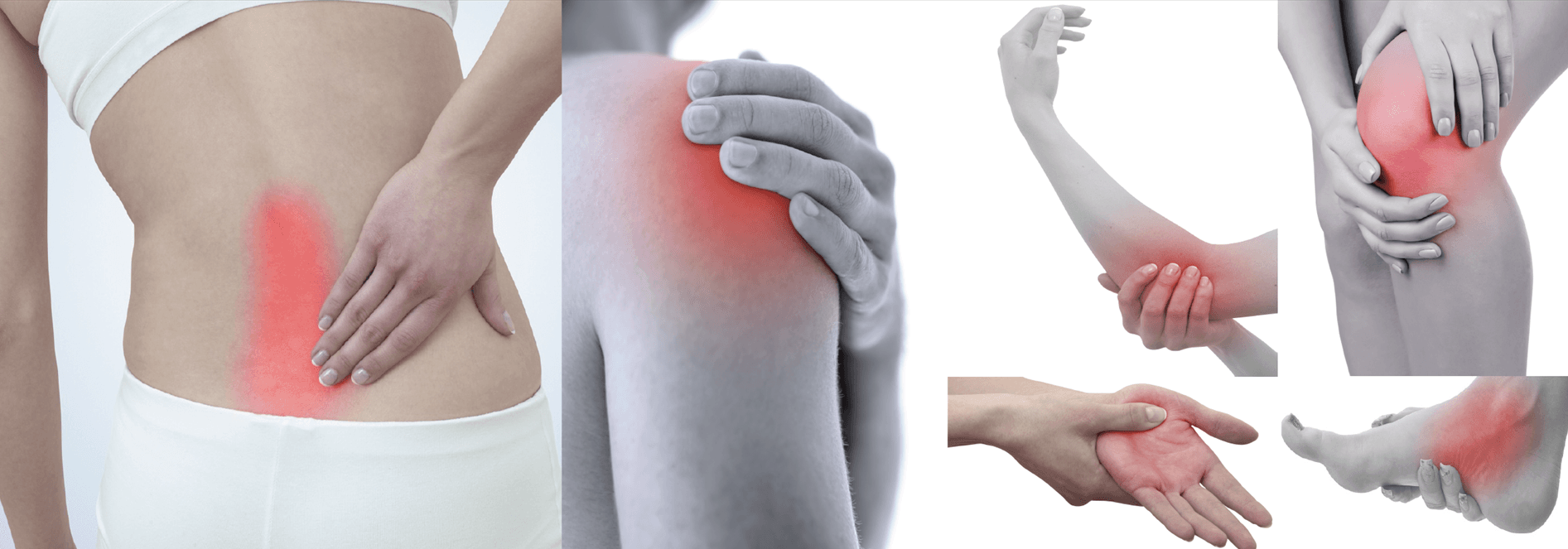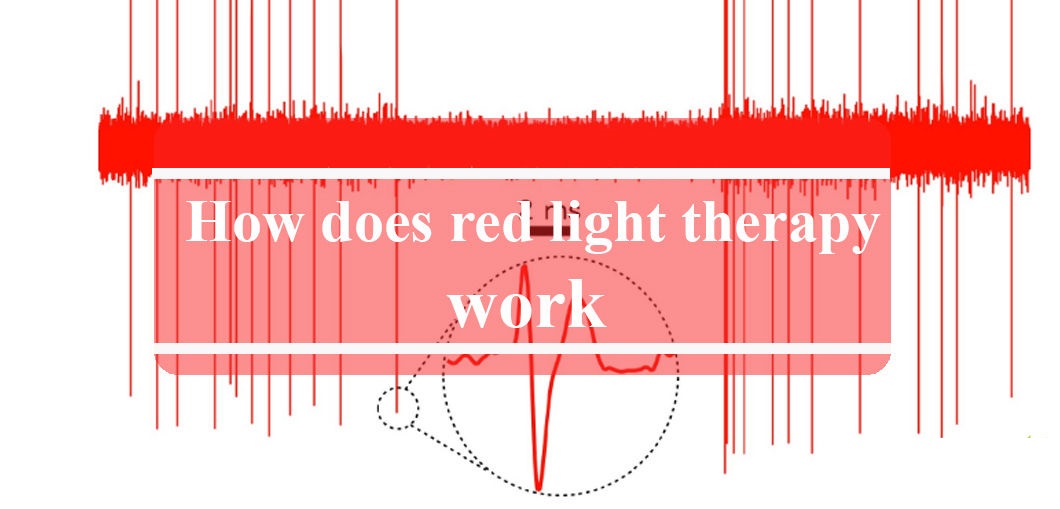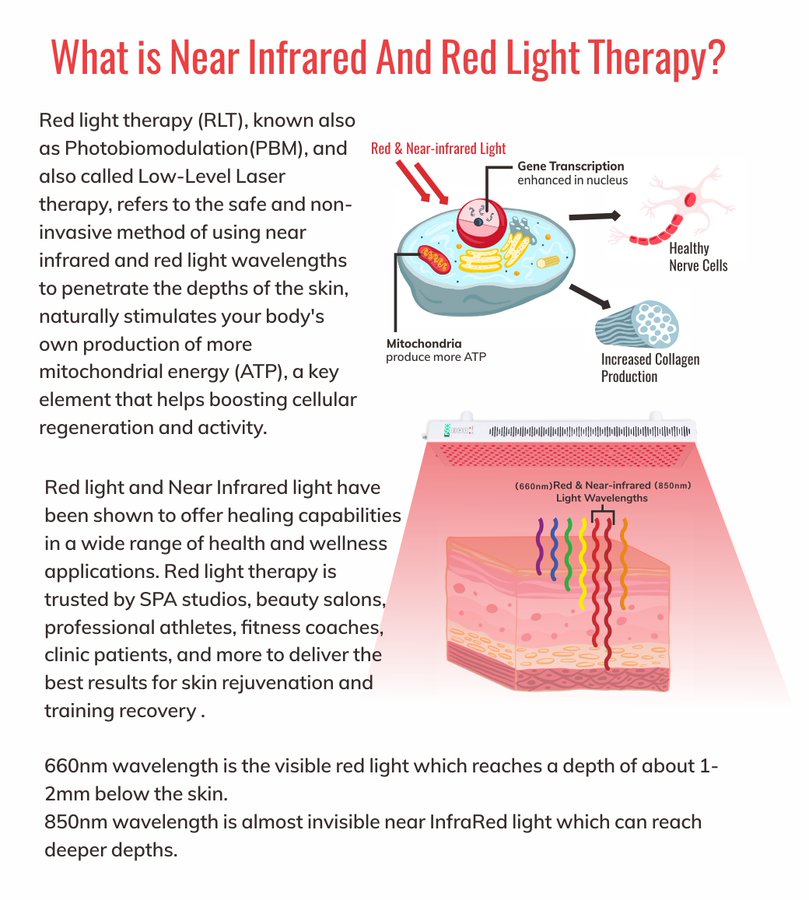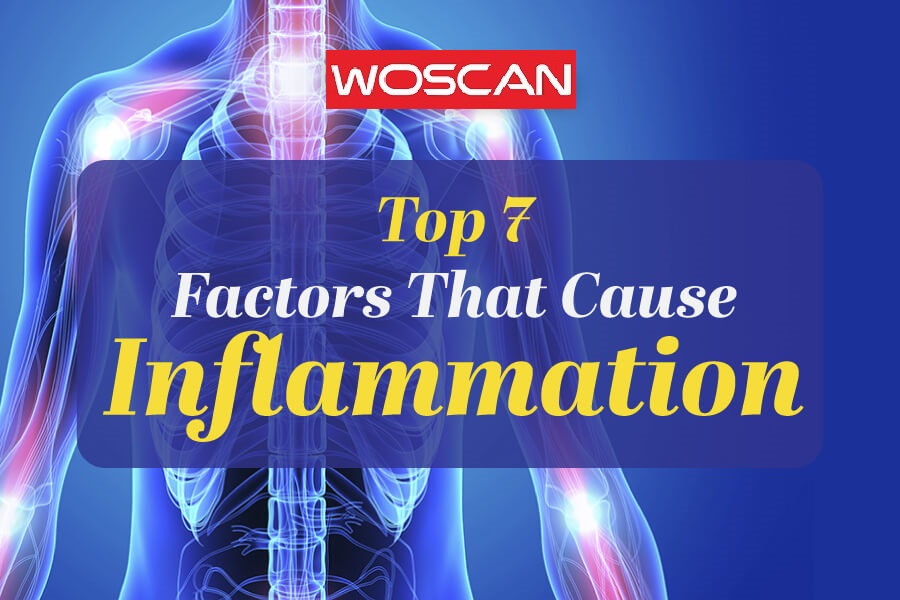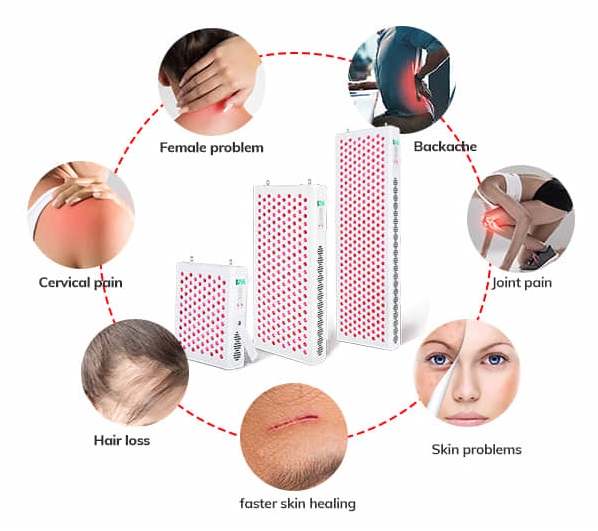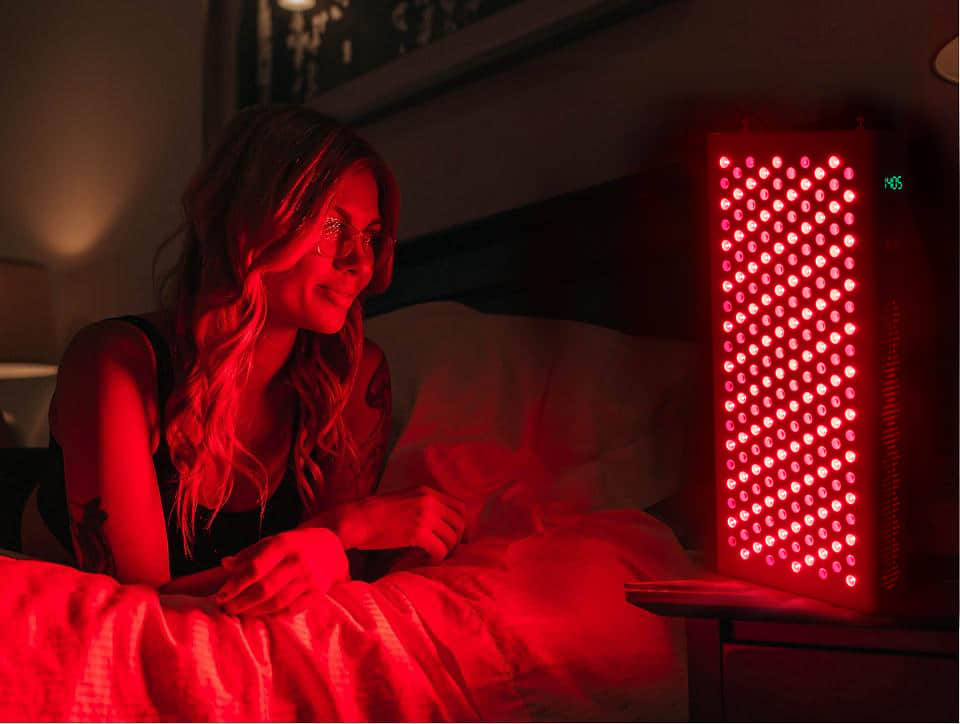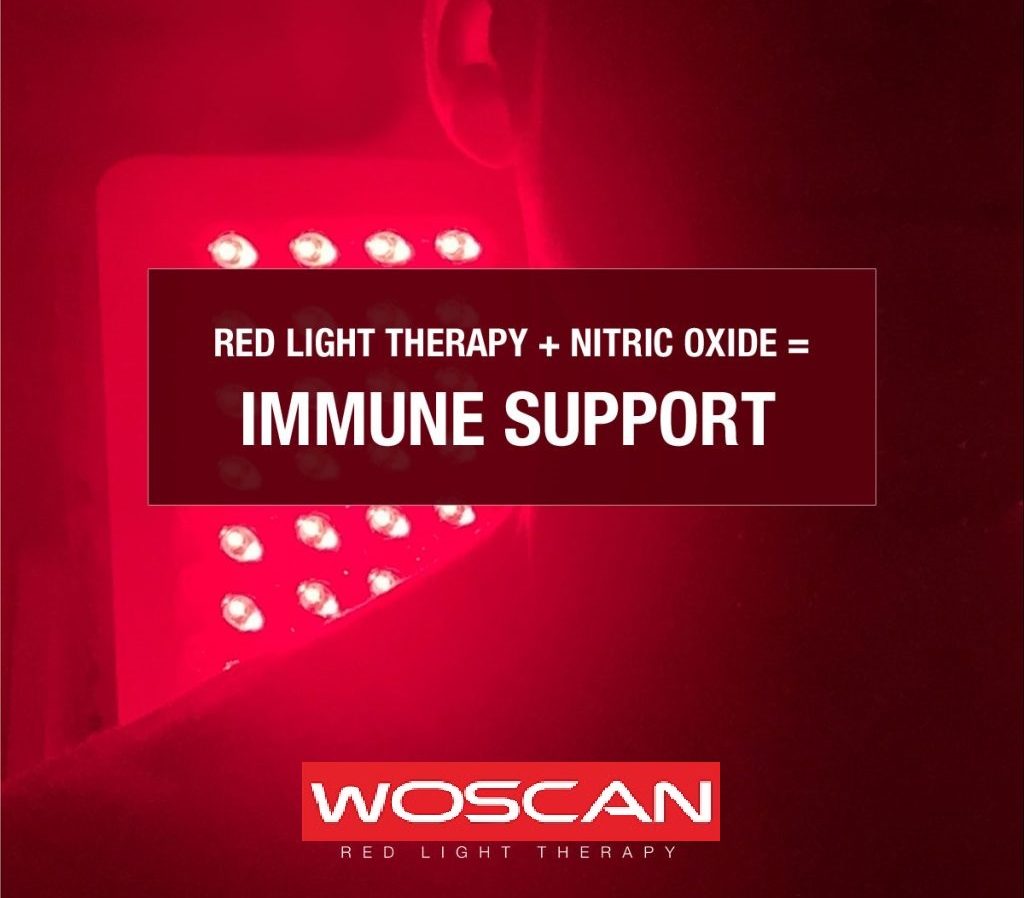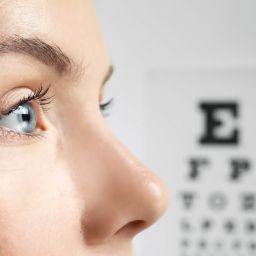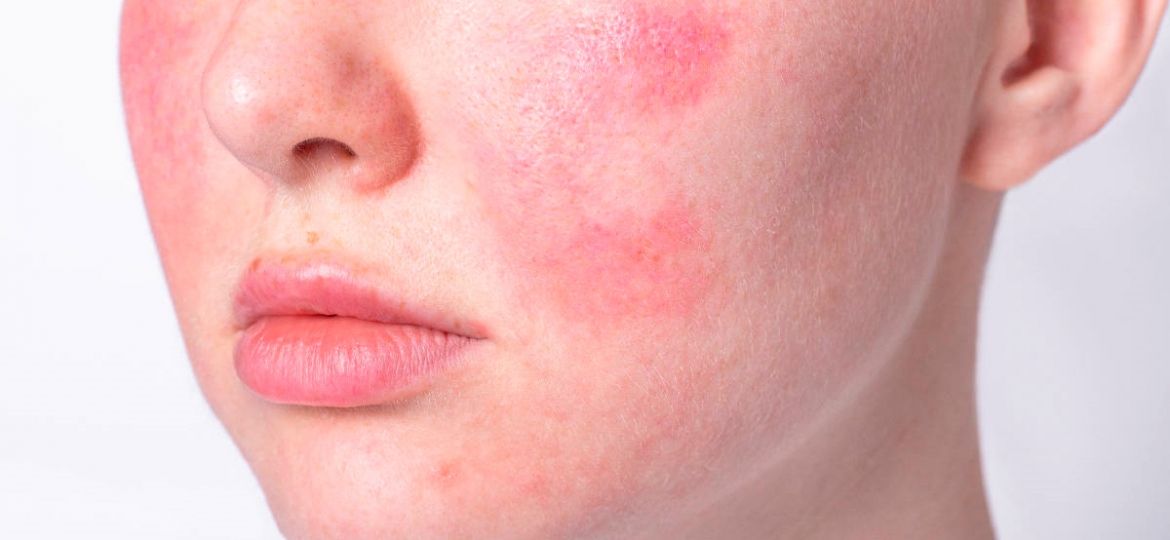
Rosacea, a prevalent yet often challenging skin condition, manifests as chronic facial redness, swelling, and sometimes acne-like eruptions. This dermatological issue not only affects physical appearance but can also significantly impact an individual’s psychological well-being. The complexity of rosacea, with its multifactorial etiology involving inflammation, vascular abnormalities, and potential microbial influences, necessitates innovative and effective management strategies.
Red Light Therapy (RLT), a non-invasive and scientifically grounded therapy that is gaining prominence in the realm of dermatological interventions, particularly in the management of rosacea. RLT operates on the principle of photobiomodulation. This process involves the absorption of light photons by mitochondrial chromophores in the skin cells, leading to a cascade of biological responses.
At the core of RLT’s efficacy is its ability to enhance mitochondrial activity, thereby increasing the production of adenosine triphosphate (ATP), the cellular energy currency. This upsurge in ATP boosts cellular metabolism and function, facilitating tissue repair and reducing inflammation. In the context of rosacea, this means addressing both the visible symptoms and the underlying inflammatory processes.
Furthermore, RLT’s role in modulating reactive oxygen species (ROS) and improving blood flow is of particular relevance. By balancing ROS production, RLT aids in reducing oxidative stress, a contributing factor in rosacea’s pathophysiology. Additionally, the therapy’s impact on vascular health helps in alleviating the persistent redness and visible blood vessels characteristic of rosacea.
This exploration into RLT for rosacea aims to delve deeply into its scientific basis, practical application, and the potential it holds as a gentle yet effective therapy for individuals seeking relief from the persistent symptoms of rosacea. Our journey through this article will illuminate the multifaceted benefits of RLT, positioning it as a cornerstone in the modern management of rosacea.
What is Rosacea and Its Relationship with Red Light Therapy
Rosacea is a complex, chronic skin disorder primarily characterized by facial redness, inflammation, and the development of acne-like breakouts. It often involves the central face, including the cheeks, nose, chin, and forehead. In more advanced stages, this condition can lead to rhinophyma (thickening of the nasal skin) and ocular complications. The pathophysiology is multifactorial, involving immune system dysregulation, neurovascular changes, and possibly microbial factors.
At the cellular level, rosacea is marked by an abnormal inflammatory response. Inflammatory cytokines, such as interleukin-1β (IL-1β) and tumor necrosis factor-alpha (TNF-α), play a pivotal role in the initiation and perpetuation of inflammation. These cytokines contribute to the dilation of blood vessels, leading to persistent redness and visible blood vessels, a condition known as telangiectasia.
Another significant aspect of this is its vascular component. Abnormal regulation of vascular endothelial growth factor (VEGF), a key mediator in the formation of new blood vessels (angiogenesis), contributes to the chronic erythema and telangiectasia seen in rosacea patients. Additionally, reactive oxygen species (ROS) and oxidative stress are implicated in rosacea’s pathogenesis, exacerbating inflammation and tissue damage.
Common triggers for rosacea flare-ups include environmental factors such as sun exposure, extreme temperatures, spicy foods, alcohol, and stress. These triggers can exacerbate the vascular and inflammatory components of the disease, leading to increased symptoms.
Traditional approaches to managing this condition include topical and oral medications aimed at reducing inflammation and controlling flare-ups. However, these methods may not be suitable for all individuals due to side effects or contraindications.
This brings us to the consideration of this therapy as a promising therapy option. By addressing the underlying inflammatory and vascular changes without the adverse effects commonly associated with pharmacological interventions, RLT offers a novel approach to managing the complex symptoms of rosacea. In the following sections, we will explore how the specific mechanisms of this therapy align with the pathophysiological aspects of rosacea, potentially providing effective and gentle therapy for individuals grappling with this challenging skin condition.
The Science of Red Light Therapy for Rosacea
Red Light Therapy (RLT), also known as low-level laser therapy (LLLT) or photobiomodulation (PBM), stands at the forefront of innovative therapeutic approaches in dermatology and beyond. This therapy utilizes specific wavelengths of light, to induce a series of biological responses in the body.
The foundation of RLT lies in its interaction with mitochondrial chromophores, particularly cytochrome c oxidase, within the cells. Cytochrome c oxidase, a key component of the mitochondrial electron transport chain, plays a crucial role in cellular respiration and energy production. When red light photons are absorbed by these chromophores, it leads to an increase in mitochondrial activity, enhancing the production of adenosine triphosphate (ATP), the energy currency of the cell. This increase in ATP production is fundamental to RLT’s therapeutic effects, as it provides cells with the energy needed for various reparative and regenerative processes.
Besides boosting ATP production, RLT modulates reactive oxygen species (ROS) within cells. While ROS are typically associated with oxidative damage, they also serve as signaling molecules that can promote healing and anti-inflammatory responses when carefully modulated. RLT, through its action on the mitochondrial respiratory chain, helps in balancing ROS production, thus reducing oxidative stress and inflammation.
Another critical aspect of RLT is its impact on nitric oxide (NO) release. NO, when released from cells, can improve blood flow and enhance oxygen and nutrient delivery to tissues. This is particularly relevant in skin conditions like rosacea, where improved blood flow can help in reducing inflammation and promoting healthier skin.
RLT’s ability to penetrate the skin and affect deeper layers makes it a powerful therapy tool. Unlike UV light, which can cause skin damage, red light offers a non-destructive approach, stimulating natural biological processes without adverse effects.
Through these mechanisms—enhanced ATP production, ROS modulation, and improved circulation—this therapy offers a scientifically grounded approach to managing various skin conditions. This foundational understanding sets the stage for exploring how RLT specifically benefits those suffering from this condition, a topic we will delve into in the next section of this exploration.
Red Light Therapy and Rosacea: Clinical Studies
The therapeutic landscape for rosacea has been significantly enriched by the advent of this therapy, a modality that addresses the condition’s core pathological features: inflammation, immune dysregulation, and abnormal vascular responses. The intersection of RLT with these fundamental aspects of this condition is illuminated by emerging scientific research.
LESS INFLAMMATION WITH THIS THERAPY
A pivotal study titled “The effects of photobiomodulation therapy on inflammatory mediators, immune infiltration, and angiogenesis in a mouse model of rosacea” provides critical insights into RLT’s mechanism of action in the context of rosacea. The investigation highlights that photobiomodulation therapy (PBMT), a form of RLT, can improve rosacea conditions by “regulating key inflammatory mediators and dysregulating immune infiltration and angiogenesis.”[1] This finding is significant as it underscores RLT’s ability to modulate the inflammatory environment characteristic of rosacea, thereby alleviating symptoms and improving skin appearance.
At the heart of RLT’s efficacy is its impact on inflammatory mediators. By influencing the levels and activity of these mediators, RLT helps in reducing the chronic inflammation that typifies this condition. This modulation of inflammation extends beyond mere symptom relief; it addresses the underlying immune responses that perpetuate rosacea’s cycle of flare-ups and remission.
Furthermore, RLT’s influence on immune cell infiltration and angiogenesis, the formation of new blood vessels, is particularly relevant. The proliferation of blood vessels and the inappropriate immune response contribute to persistent redness and irritation. By regulating these processes, RLT offers a means to control these pathological changes, leading to improved skin health.
POSITIVE EFFECT IN THE ROSACEA TREATMENT
Complementing these findings is another study titled “Mast cell stabilization: new mechanism underlying the therapeutic effect of intense pulsed light on rosacea.” This research sheds light on how intense pulsed light (IPL), a related therapy, impacts rosacea at the cellular level. IPL was found to decrease MMP-9, KLK5, and cathelicidin expression in P815 cells, “reducing the release of inflammatory cytokines and inhibiting rosacea-like inflammatory reactions.” [2] These results are noteworthy as they provide a parallel understanding of how light-based therapies can influence key molecular pathways involved in rosacea’s pathogenesis.
While RLT and IPL operate through slightly different mechanisms, their impact on reducing inflammatory mediators and altering cellular responses is a shared therapeutic principle. This convergence of effects highlights the potential of light-based therapies in offering a non-invasive, effective, and well-tolerated option for managing rosacea.
In summary, the evidence underscores the potential of RLT as a scientifically grounded therapy for the condition, capable of addressing its inflammatory, immune, and vascular aspects. By delving into the biological intricacies of this therapy, we gain a deeper appreciation of its role in providing relief and management for those affected by this challenging skin condition.
How to Use Red Light Therapy for Rosacea
Incorporating Red Light Therapy (RLT) into the management of rosacea involves understanding its application, selecting appropriate devices, and adhering to safety protocols. This section provides a guide to effectively utilizing RLT, emphasizing its scientific basis and physiological mechanisms of action.
SELECTING THE RIGHT RLT DEVICES
Wavelength Considerations
Choose devices that emit light in the 605nm. 630nm, 633nm, 640nm, 650nm, 660nm, 670nm, 830nm and 850nm range, as this spectrum is most effective in modulating inflammatory responses and promoting cellular health in rosacea-affected skin. In our chart you can find specific wavelength recommendations for each condition.
FDA Cleared
Select devices that have received FDA clearance, ensuring safety and efficacy standards are met.
Device Type
Consider small devices for targeted areas or LED panels for broader facial coverage, depending on the extent of your rosacea symptoms. Try our dosing calculator for optimal results.
UNDERSTANDING THE PHYSIOLOGICAL MECHANISM
Photobiomodulation
Recognize that RLT works through photobiomodulation, stimulating cellular mitochondria and enhancing ATP production. This increased energy aids in reducing the inflammatory processes and oxidative stress associated with rosacea.
Anti-Inflammatory Action
RLT helps in modulating inflammatory mediators, which is crucial in managing rosacea’s inflammatory component.
Vascular Benefits
The therapy can improve blood flow and reduce the visibility of blood vessels, addressing the vascular symptoms of rosacea.
The use of RLT for managing rosacea is an exercise in precision and consistency. By selecting the appropriate device, adhering to usage guidelines, and understanding the underlying biological mechanisms, individuals with this condition can harness the therapeutic potential of RLT to mitigate symptoms and improve skin health. Regular, correctly administered RLT sessions can be a valuable addition to a comprehensive skin management regimen, offering a non-invasive and scientifically supported therapy option.
Additional Benefits of Red Light Therapy
Red Light Therapy (RLT), offers a plethora of benefits for skin health and overall well-being. These advantages stem from RLT’s fundamental mechanisms of action: photobiomodulation, enhanced mitochondrial function, and modulation of inflammatory processes.
ANTI-AGING EFFECTS
RLT stimulates collagen production, a crucial protein for maintaining skin elasticity and reducing the appearance of fine lines and wrinkles. The therapy enhances fibroblast activity, cells responsible for collagen synthesis, through increased ATP production and improved cellular metabolism.
WOUND HEALING
The therapy accelerates tissue repair by stimulating cellular proliferation and migration. This is particularly beneficial in wound healing, where rapid closure of wounds is crucial. RLT’ s ability to reduce inflammation and increase blood flow also plays a vital role in enhancing the body’s natural healing processes.
This makes RLT beneficial for post-surgical healing, cuts, burns, and other skin injuries.
ACNE TREATMENT
RLT’s anti-inflammatory properties are effective in treating acne. By reducing inflammation and influencing sebaceous gland activity, RLT helps in reducing acne breakouts. Additionally, the therapy aids in reducing the proliferation of acne-causing bacteria, further diminishing acne symptoms.
RLT can be used in conjunction with other acne therapies for a more comprehensive approach to acne management.
PAIN RELIEF
The therapy’s ability to reduce inflammation extends to pain management. RLT can help alleviate chronic pain conditions by reducing inflammatory cytokines and enhancing local blood circulation, providing relief in conditions like arthritis and muscular pain.
MENTAL WELL-BEING
Regular use of RLT has been linked to improved mood and sleep patterns. The therapy’s ability to reduce pain and improve physical appearance can also contribute to better mental health and self-esteem.
SKIN CONDITIONS BEYOND ROSACEA
RLT is beneficial for other skin conditions such as psoriasis, eczema, and vitiligo, offering a non-invasive option to reduce symptoms and improve skin health.
The biological and physiological actions of this therapy extend its benefits beyond rosacea management. By influencing cellular energy production, reducing inflammation, and stimulating repair processes, RLT emerges as a versatile therapy option for various skin conditions, pain management, and overall well-being. This broad spectrum of benefits underscores RLT’s potential as a valuable tool in both dermatological and general health contexts.
RLT for Rosacea Summary
Red Light Therapy (RLT) emerges not only as a promising therapy option for rosacea but also as a multifaceted tool for enhancing overall skin health and well-being. By delving into its scientific underpinnings and clinical applications, we uncover a therapy modality that aligns with the complex pathophysiology of this condition, offering an effective, non-invasive, and well-tolerated approach to management.
The key to RLT’s effectiveness in rosacea lies in its ability to modulate inflammatory processes and improve vascular health through photobiomodulation. By stimulating mitochondrial function and enhancing ATP production, RLT reduces oxidative stress and inflammation, two critical factors in rosacea’s pathology. Moreover, its influence on vascular responses helps in mitigating the redness and visible blood vessels characteristic of the condition.
Beyond rosacea, RLT offers a range of additional benefits, including anti-aging effects, enhanced wound healing, acne management, pain relief, and improvements in mental well-being. These advantages stem from RLT’s foundational impact on cellular metabolism and inflammatory modulation, making it a versatile tool in both dermatological and general health care.
For individuals grappling with this condition, RLT presents a unique opportunity to address both the symptomatic and underlying biological aspects of their condition. As we have explored, its integration into a comprehensive rosacea management plan can lead to improved outcomes, reduced reliance on pharmacological interventions, and an overall enhancement in the quality of life.
In closing, we encourage readers to consider Red Light Therapy as a part of their rosacea management strategy. With its strong scientific basis, safety profile, and wide range of therapeutic effects, RLT stands as a testament to the innovative progress in dermatological therapies. Whether used alone or in conjunction with other therapies, RLT represents a forward-thinking approach to managing the complexities of this condition and enhancing skin health.
Article References
[1] Wu S, Su Y, Wang L, Sun B, Jiang X. The effects of photobiomodulation therapy on inflammatory mediators, immune infiltration, and angiogenesis in a mouse model of rosacea. Ann Transl Med. 2022 Aug;10(15):831. doi: 10.21037/atm-22-3204. PMID: 36035005; PMCID: PMC9403938.
[2] Jiang P, Liu Y, Zhang J, Liu Y, Li M, Tao M, Zhang Y, Tang Z, Liu W, Xu Y. Mast cell stabilization: new mechanism underlying the therapeutic effect of intense pulsed light on rosacea. Inflamm Res. 2023 Jan;72(1):75-88. doi: 10.1007/s00011-022-01635-6. Epub 2022 Nov 3. PMID: 36329130.


